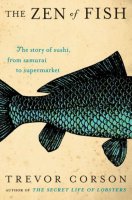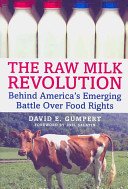For the läckerli-lovers in the family, and anyone hungry for a reminder of Basel:
It's no secret that I like Michael Pollan's food books, and I'm fifth in line for his latest, Cooked, at our library. In the meantime, here's a chance to hear Pollan speak on the nutritional value of home cooking. (H/T DSTB) I'm sorry I can't embed the interview; you'll have to click on the link to hear it. Here are some quick excerpts:
Why don't people cook at home anymore? Skills have been lost over the last two generations, and people are intimidated by culture of cooking they see on television.
Time is not a valid issue: "people make time for things they've decided are important."
Neither is demographics: "poor women who cook have better diets than wealthy women who don't."
"Built into the very nature of cooking at home is a curb on consuming the worst possible food."
The best diet for an American today? Pollan, quoting a marketing researcher in the food industry itself: "Eat anything you want, as long as you cook it yourself."
Pollan's final recommendation leaves me scratching my head, however: Cook at home, and get soda out of your house, and obesity is taken care of.
It sounds great, but reminds me of the facile advice I heard years ago that an easy way to gain more time is to cut down on television viewing, or that you can save a lot of money by quitting the smoking habit. What if you don't smoke and don't watch TV and still find yourself short of time and money? What if you already cook at home and don't drink soda?
If that depresses you, take a moment to enjoy the story of Rowan Jacobson's (author of Fruitless Fall and and Chocolate Unwrapped) attempt to break all of Michael Pollan's Food Rules in one day.
Having watched the documentary on GMO foods, which reveals that those in charge of food safety in this country have treated with scorn the simple request that products made with genetically modified organisms be labelled as such, I have little faith that the Food and Drug Administration will not grant the request of the dairy industry to to alter the definition of "milk" to include chemical sweeteners such as aspartame and sucralose without putting "Low Calorie" or "Reduced Calorie" on the label. The artificial sweeteners would still be included in the ingredient list on the packaging, but the main label, that which most people read, would give no hint that the product was artificially sweetened.
I say that even "low calorie" is disingenuous. "Artificially Sweetened" or "Contains Sucralose" (Aspartame, whatever) ought to be in large, bold print on the package. Once upon a time, "no sugar added" was synonymous with "unsweetened." Now we must drill down to the small-print ingredient list to find out this important information, and more than once I've been caught and ended up at home with a useless product. It is as if the surgeon general's warnings were printed on the inside of cigarette packages.
In the spirit of Fruitless Fall, The Omnivore's Dilemma, Food, Inc., Everything I Want to Do Is Illegal, and similar stories about problems in our food supply, I present Genetic Roulette: The Gamble of our Lives (H/T DSTB).
I'm always a bit skeptical of one-sided documentaries, especially of the scary and countercultural kind. But this look at the unforeseen consequences of the introduction of Genetically Modified Organisms into our diet, environment, and social structure is well-done and contains much food for thought, including the rise of herbicide resistance, decreasing yield, suppression of academic freedom, and the devastation visited on third-world farmers. I had to watch in bits and snatches because the film is an hour and 25 minutes long, but I found it well worth the time invested.
Here's hoping my nephew will accede to the suggestion that he take on, as a school project, a balanced investigation of both sides of these claims. If he does, and gives his permission, I'll report the results here.
I've written about Biscoff Spread, aka Speculoos à Tartiner before. Thanks to a tip from my sister-in-law, yesterday I made Biscoff fudge. I tried the recipe from this site almost verbatim the first time, using the creamy version of the spread and substituting butter for margarine. The second time I tried the crunchy, and used half the vanilla called for. Both results were very good, but I prefer the smooth Speculoos and the smaller amount of vanilla. I'd love to research other fudge recipes to use as a base, but that's a future project. The recipe from the bakerella.com site, with my alterations, follows:
Biscoff Fudge
1 1/2 cups sugar
6 Tablespoons butter
1/3 cup evaporated milk
1/4 tsp vanilla (or 1/8 tsp Penzey's double-strength vanilla, which is what I used)
1/2 cup Biscoff spread (creamy or crunchy)
3.5 oz. or half a jar of Marshmallow Creme
- Combine sugar, butter, and evaporated milk in a medium pot.
- Bring to full rolling boil, stirring constantly.
- Reduce heat to medium and continue boiling for 4 minutes, stirring constantly to prevent scorching. (Actually, with my stove I started at Medium and came to a full rolling boil from there.)
- Remove from heat and stir in Biscoff spread until melted.
- Add marshmallow creme and vanilla. Use a mixer to beat in the pot until well blended.
- Pour into greased 8 X 8 pan.
- Let cool and cut into small squares.
This makes a delicious fudge. It's a bit drier than I prefer (not as smooth and creamy as most fudges), but that might be solved with some tweaking of the cooking time. It's also very sweet, so make the pieces quite small when you cut it.
Don't you love what you can do with statistics and charts? This chart is from a great article in the New England Journal of Medicine: Chocolate Consumption, Cognitive Function, and Nobel Laureates. For a less scholarly report on the data, see this Reuters article.
The article begins like this.
Dietary flavonoids, abundant in plant-based foods, have been shown to improve cognitive function. Specifically, a reduction in the risk of dementia, enhanced performance on some cognitive tests, and improved cognitive function in elderly patients with mild impairment have been associated with a regular intake of flavonoids. A subclass of flavonoids called flavanols, which are widely present in cocoa, green tea, red wine, and some fruits, seems to be effective in slowing down or even reversing the reductions in cognitive performance that occur with aging.
One day, while apparently bored in a Kathmandu hotel room—I'm guessing it was night, or cloudy—the author, Franz H. Messerli, began to think.
Since chocolate consumption could hypothetically improve cognitive function not only in individuals but also in whole populations, I wondered whether there would be a correlation between a country's level of chocolate consumption and its population's cognitive function. To my knowledge, no data on overall national cognitive function are publicly available. Conceivably, however, the total number of Nobel laureates per capita could serve as a surrogate end point reflecting the proportion with superior cognitive function and thereby give us some measure of the overall cognitive function of a given country.
The results astonished him, though perhaps he should not be surprised: he is Swiss.
There was a close, significant linear correlation (r=0.791, P<0.0001) between chocolate consumption per capita and the number of Nobel laureates per 10 million persons in a total of 23 countries. When recalculated with the exclusion of Sweden, the correlation coefficient increased to 0.862. Switzerland was the top performer in terms of both the number of Nobel laureates and chocolate consumption. [emphasis mine]
The only possible outlier ... seems to be Sweden. Given its per capita chocolate consumption of 6.4 kg per year, we would predict that Sweden should have produced a total of about 14 Nobel laureates, yet we observe 32. Considering that in this instance the observed number exceeds the expected number by a factor of more than 2, one cannot quite escape the notion that either the Nobel Committee in Stockholm has some inherent patriotic bias when assessing the candidates for these awards or, perhaps, that the Swedes are particularly sensitive to chocolate, and even minuscule amounts greatly enhance their cognition.
Which perhaps explains why I need to eat more chocolate than Porter does, he being 1/4 Swedish.
Dr. Messerli reports regular daily chocolate consumption, mostly but not exclusively in the form of Lindt's dark varieties.
The above quotations were all from the NEJM article; the final ones from Reuters.
Messerli ... said that despite the tongue-in-cheek tone, he does believe chocolate has real health effects—although people should stay away from the sweeter kinds.
"[D]ark chocolate is the way to go. It's one thing if you want like a medicine or chemistry Nobel Prize, ok, but if you want a physics Nobel Prize it pretty much has got to be dark chocolate."
In case you were wondering, the date on Messerli's article is October 10, 2012. I guess they couldn't wait six more months.
Thanks to my sister, I have three Trader Joe's reusable grocery bags that would just love to be used at an actual Trader Joe's. And now, at last, Florida has a Trader Joe's store!
But it's in Naples. Granted, we really enjoyed our visit to that part of the state back in Novemeber, but I'm not one of the "Trader Joe's tourists" who are travelling hundreds of miles to the store. There's a store opening soon in Sarasota, but that's still too far away.
Nonetheless, I have hope. Now that the Florida border has been breached, can Orlando be far behind?
I note that the Naples store went in where a Borders bookstore went out. We're getting a Michael's at our former Borders. Not that Michael's is a bad idea, but there's already one nearby, and wouldn't it be fantastic to be able to walk to a Trader Joe's? Oh well, I'll be happy enough for one within a 15-minute drive and not on the far side of town.
There's some debate just what Emmen is. Stephan says it's a suburb of Luzern, and I suppose it is, Luzern being a 15-minute bus ride, or an even shorter train ride, away, which we proved today when Vivienne acquired her Swiss passport. But it hardly has a "suburban" feel, at least as I know suburbs. For one thing, there's decent public transportation—but that's no doubt because it's Swiss. For another, most people live in apartments, which says "city" to me, though Janet says that is also a Swiss characteristic, city or no. There's traffic. There's industry. There are plenty of stores, but no strip malls (though there is a mall or two). Everything is close together, and what yards there are, are tiny. Children walk to school. Janet walks to the grocery store (actually, several grocery stores), the train station, the above-mentioned malls, the swimming pool complex, and church. That feels like a city to me.
And yet.... Emmen certainly isn't a city like Basel, or Luzern, with a lively city center, and centuries of history and culture. And it has a rural feel, as well. Also within easy walking distance is a long hiking trail along the river (pedestrian, bike, and also equestrian in most places). The trail runs through wooded areas where trees are still being harvested by loggers.
(Switzerland is a great place for hiking trails. There's one that leads all the way into the city of Luzern; we had planned to hike it today, but the -9 degree Celsius temperature was a deterrent. Perhaps we should have taken advantage of such balmy weather, though: tomorrow's high is supposed to be -10, with a wind chill of -16 (that's 3 degrees Fahrenheit).
There are also several small farms nearby. One of Joseph's favorite walks is to the see the cows and goats at the nearest dairy farm, where for a single franc we pick up a liter of fresh, delicious, raw milk. (Click on the pictures to enlarge.)
So, what is Emmen? Whatever it is, it's like nothing in the United States that I know of.
Breakfast
An international child, Joseph might start his day with leftover pizza, or rice, or bread and peanut butter, or a tortilla with "spices" (more on that later). But for the most part his breakfast is "no no bissi" a.k.a. yoghurt and muesli. Unsweetened muesli and plain yoghurt—and he loves it. His drink for all meals is water. He feeds himself with a spoon quite competently, although as you can imagine some cleanup is required.
For breakfast I might have yoghurt and muesli, or cooked oatmeal, or good Swiss bread, or yummy, fresh Swiss eggs (with golden yolks). (More)
Permalink | Read 2716 times | Comments (0)
Category Travels: [first] [previous] [next] [newest] Children & Family Issues: [first] [previous] [next] [newest] Everyday Life: [first] [previous] [next] [newest] Food: [first] [previous] [next] [newest]
If I weren't eating so well at the famous Swiss Zum Stücklin, I might be sad at missing the Outstanding in the Field event held at our favorite egg (and more) farm, Lake Meadow Naturals. Not that I'm in the habit of spending $180/person on meals, not even in Switzerland, not even when we ate at the incomparable restaurant at Les Trois Rois in Basel. But I'm happy for our local farm to get such national recognition.
We're stocking up on meals, pre-birth, and today made a double batch of our favorite stew. The recipe calls for a hefty helping of paprika. Spices should not necessarily be increased in direct proportion, but I like paprika, so I doubled the quantity—and then, as I usually do, threw in a bit more.
Some of Janet's spices are labelled in English, but most in the Swiss triumvirate of German, French, and Italian. This jar had but a one-word label: "paprica." Perhaps paprika is the same in every language.
Or not. The spice in that jar was decidedly not paprika as I have always known it. Picture a pot of stew seasoned with a heaping tablespoon of red pepper....
The stew was delicious. Even Joseph liked it. (Then again, he asks for "spices" on almost everything.) Hot pepper worked. But it's a good lesson in taking care when cooking in another country. What if "paprica" had actually meant "ginger"?
So, Orlando finally gets a Wawa! Nowhere near us yet, but there's hope.
I'm still waiting for a Trader Joe's....

The Zen of Fish: The Story of Sushi, from Samurai to Supermarket by Trevor Corson (HarperCollins, 2007)
Eating sushi is like rearing children: there's always someone happy to point out that you're doing it all wrong.
Not that I care much. So what if many of the rolls I love are American inventions? If the Japanese consider them to be inside-out rolls? If adding more seasoning to your roll is an insult to the chef? (Well, I suppose I care a bit more about the last. I don't like insulting people, especially not those who are providing my dinner. Then again, I'm the one eating it.) I like Japanese sushi; I like American sushi; and I don't mind being too unsophisticated to enjoy the sea urchin and raw quail egg combo that Porter ordered in Boston.
However, I was happy to learn that sushi is meant to be eaten with the fingers, not chopsticks. And eaten in one bite—though I'm not sure how. Do the Japanese have larger mouths than Americans? Seems unlikely.
The Zen of Fish weaves the history, science, and culture of America's unexpected food craze together with the adventures of students at the California Sushi Academy. It's well-written, highly informative, fun to read, and will make you very hungry—when it's not causing you to rethink consuming fish in any form. My only complaint is that the author apparently considered his target audience to be largely made up of adolescent boys. I could have done without most of the sexual references and innuendo—although it was quite cool to learn about the shrimp that start out male, then after a few years become female. The timing of the change assures a gender-balanced population, suggesting perhaps that shrimp are smarter than people.
Okay, even writing about sushi makes me hungry.
Our grocery budget has been taking a hit in the last several months, partly because of a significant general price increase at the stores, and partly because food costs a lot less when half the household has half his meals covered by an expense account, which hasn't happened for a while. (That's not to say it's a bad trade-off for the privilege of working from home.) So it's a very good thing that yesterday was in September, and today in October: I've been having fun.
Yesterday I checked out the new grocery store in town: GFS Marketplace. When they offer you a coupon that takes $10 off a $50 purchase, it would be rude to ignore them.
I had already spent $50 at my regular grocery store this week, but was certain I would have no trouble finding another $50 worth. What I didn't realize until stepping into the store is that GFS is a restaurant supplier. The quantities and sizes would be attractive to a large family, or a large party, but not for everyday wear for a household of two. But I decided to check out the whole store, anyway, and as you might guess my coupon did not go to waste. My first big find was something new and irresistible: three pounds of frozen Alaskan wild-caught salmon burgers for $18. Then five pounds of frozen whole raspberries for $21.50. In my regular store I can find large packages of frozen strawberries and blueberries, but raspberries are only sold in small, expensive packages. And we love smoothies in this household! (More)
 The Raw Milk Revolution: Behind America's Emerging Battle Over Food Rights, by David E. Gumpert (Chelsea Green Publishing, White River Junction, Vermont, 2009)
The Raw Milk Revolution: Behind America's Emerging Battle Over Food Rights, by David E. Gumpert (Chelsea Green Publishing, White River Junction, Vermont, 2009)
That the forward to The Raw Milk Revolution was written by Joel Salatin—whose Polyface Farms is the poster child for independent, sustainable farming—gives the reader a good idea of where the book ends up. That's a lot more than the author knew when he began his investigation. He was over 50 when he had his first glass of raw milk, and hadn't given milk of any form much thought for some 30 years.
But for a writer with interests in both small businesses and health, the growing demand for unpasteurized, unhomogenized milk—and the increasing governmental interference with the small dairy farms that are its only source—was a natural field to investigate.
I had my first glass of raw milk at lunch, with a homemade chocolate chip cookie.... Suddenly I was back in my childhood, with my all-time favorite snack. The milk was as creamy and rich tasting as it looked, with a slight sweetness I didn't recall from my childhood milk. ... But I'd be lying if I didn't admit that overhanging the experience was an anxiety-laden question provoked by my American history classes highlighting the importance of pasteurization in saving lives: Might this wonderful milk kill me? I actually went to sleep wondering whether I'd wake up. ... Of course, there was no bad reaction of any sort, and I became a regular customer.
Gumpert is lucky. The places one can legally purchase raw milk are few. In Switzerland Janet lives an easy walk from a local dairy, where she can buy all she wants at a good price. Pennsylvania is one of the few states in the U.S. where raw milk is legal, and Heather can get some for the cost of a long drive and a lot more money than the grocery store charges for their agri-business milk. In Florida we can't buy it legally at any price, except as (very expensive) pet milk, "not for human consumption." (More)





